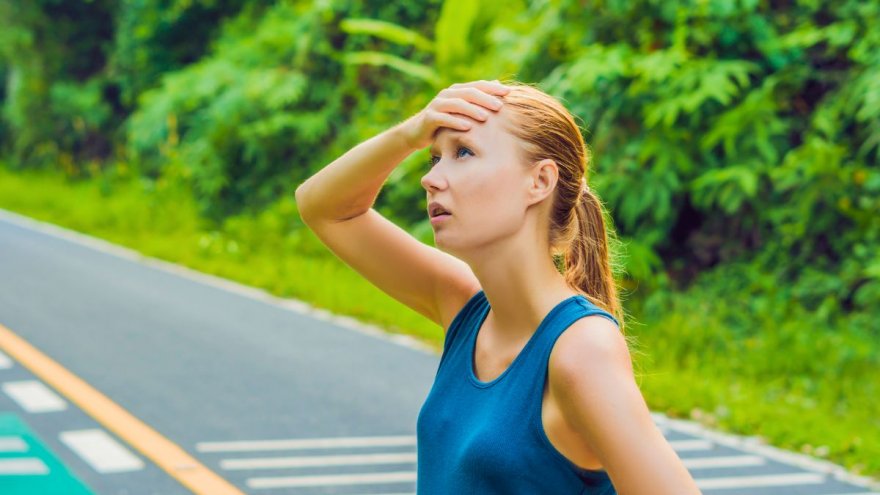Why Does My Face Get So Red When Running?

When you run, your body increases blood flow to muscles and skin as part of its effort to regulate your internal temperature and deliver more oxygen to your muscles. This increased circulation causes your blood vessels to expand, particularly those close to the surface of your skin, leading to a reddened appearance.
What Causes a Red Face When Exercising?
The capillaries in your face are broader and closer to the surface than on other parts of your body. Research shows that when you exert yourself, dilation of those blood vessels can occur, often leading to facial redness.
Here are the most common causes of face redness when running:
- Increased Blood Flow: During exercise, your body pumps more blood to your muscles and skin to deliver oxygen and nutrients, causing the blood vessels to dilate and the skin, particularly the face, to appear redder.
- Histamine: According to dermatologists, some people experience a release of histamine during exercise. Mainly known for its role in allergies, histamine is simply a chemical released by our immune system in response to some stress.
- Rosacea: A common skin condition that makes the skin on your face red or bumpy; if you are prone to rosacea, you might experience worse facial flushing during and post-exercise.
- Sensitive Skin: Those with sensitive skin can be more prone to facial redness.
- Skin Tone: People with fair skin are also more prone to having a flushed face during exertion.
- Sun Exposure: Especially if you have fair or sensitive skin, avoid spending too much time in the sun to prevent a red face.
- Temperature Regulation: Capillaries widen to push the heat to the surface in response to a rise in body temperature when working out.
How Long Does Post-Workout Redness Last?
For most people, bright red face is gone within 10-20 minutes. However, some people’s faces stay red for up to an hour post-workout.
As long as your core temperature seems to be going down and you are not exhibiting other signs of heat exhaustion, it is likely nothing to worry about. If you don’t like having a red face, there are some things you can try.
What Can I Do to Reduce Facial Redness Post Run?
- Avoid Alcohol and Spicy Foods: Did you know that drinking alcohol and eating spicy foods can make your face turn red? Avoiding these things post-workout can help you prevent red face.
- Cold Water: Splashing or spritzing cool water on your face can help. You can do this during and after engaging in physical activity. Not only will this help prevent redness, but it can also aid in cooling your core body temperature.
- Cold Compress: A cold compress on is another excellent way to cool yourself down as well as prevent redness.
- Find Shade: Move to a cooler environment if you feel hot and flushed post-workout.
- Hydrate: Your body needs plenty of fluids during and after you workout to keep you moving, prevent overheating, as well as aid in recovery.
- Skincare Routine: Taking good care of your skin can help prevent that beet-red look. This can include using a face cleansing wipe right after you work out, washing with a facial cleanser, and using a good moisturizer. Adding aloe vera to your skincare routine can also prove helpful.
If your facial redness is severe, persistent, or accompanied by other symptoms, it may be worth consulting a dermatologist to rule out underlying conditions like rosacea or allergies that could be exacerbated by exercise.
Is It Bad if My Face Gets Really Red When I Work Out?
While a red face during exercise is usually not a cause for concern, staying aware of your body’s signals and ensuring you take care of your skin and hydration needs is important. If you have any doubts or experience additional symptoms, seeking professional advice is always a good idea.
It should be noted that a red face characterizes some illnesses. Symptoms of heatstroke include headache, confusion, nausea, dizziness, red skin, rapid pulse, and high body temperature. If you have multiple of these symptoms and have been outside on a hot day, seek medical attention.
Latest Articles
 Is Running on a Treadmill Easier Than Running Outside?Runners have their own preferences, whether it is treadmill running, running outside on the road, or exploring trails. So...
Is Running on a Treadmill Easier Than Running Outside?Runners have their own preferences, whether it is treadmill running, running outside on the road, or exploring trails. So... Is It OK to Use Trail Running Shoes on the Road?While trail running shoes can be used on roads, especially in situations where a runner encounters mixed terrains or pref...
Is It OK to Use Trail Running Shoes on the Road?While trail running shoes can be used on roads, especially in situations where a runner encounters mixed terrains or pref... How to Fix Sore Quads After Running?Rest, ice, gentle stretching, and over-the-counter pain relievers can help soothe sore quads after running. Also, ensure ...
How to Fix Sore Quads After Running?Rest, ice, gentle stretching, and over-the-counter pain relievers can help soothe sore quads after running. Also, ensure ... 10 Fruits With The Most Electrolytes to Replace Sports DrinksThese fruits are high in electrolytes such as potassium, magnesium, and calcium, essential for hydration, muscle function...
10 Fruits With The Most Electrolytes to Replace Sports DrinksThese fruits are high in electrolytes such as potassium, magnesium, and calcium, essential for hydration, muscle function...

